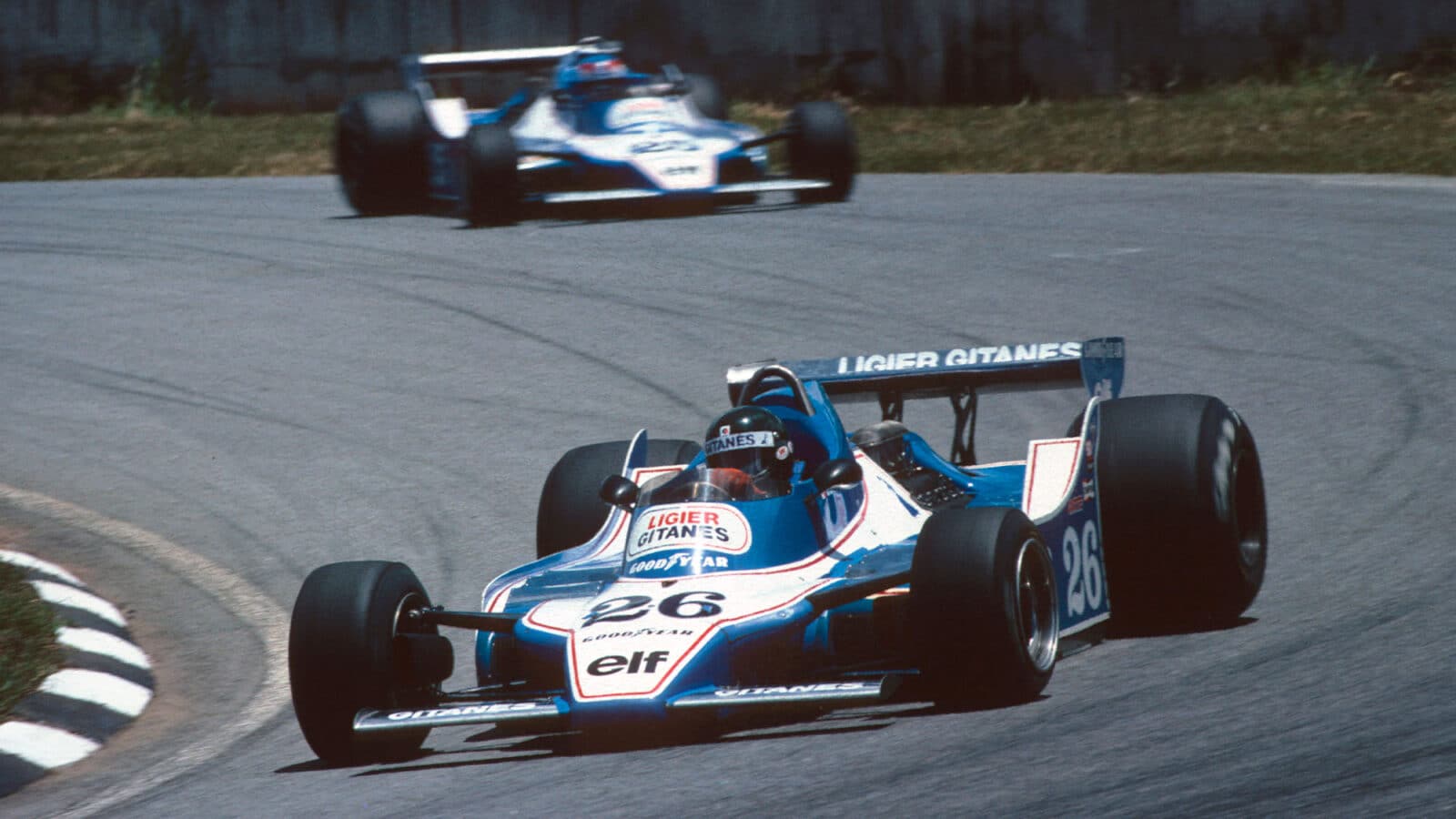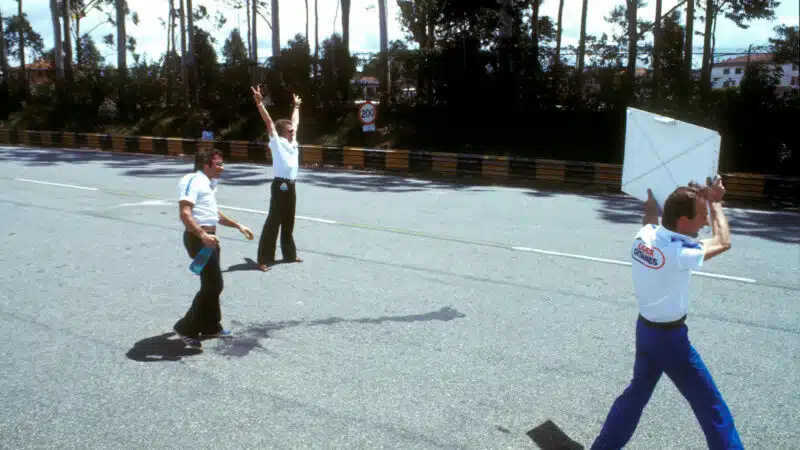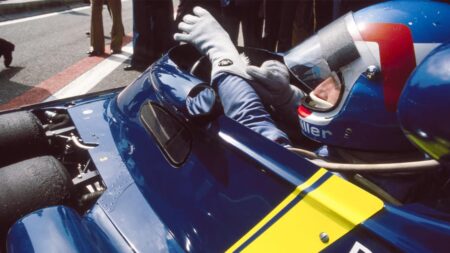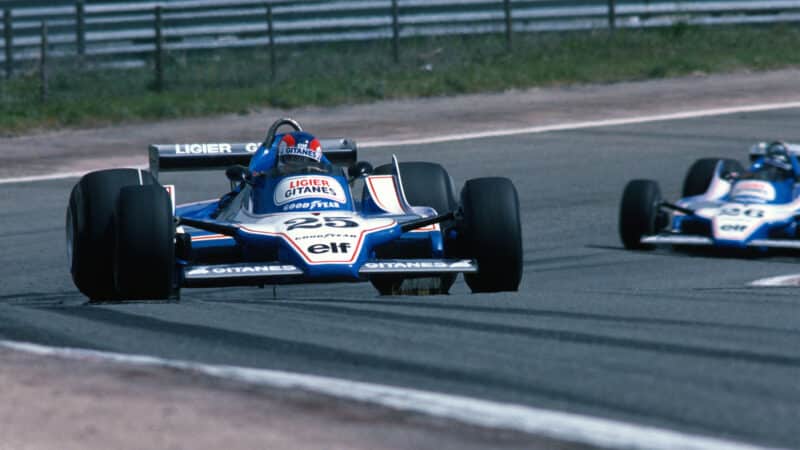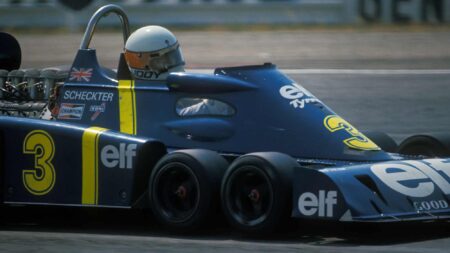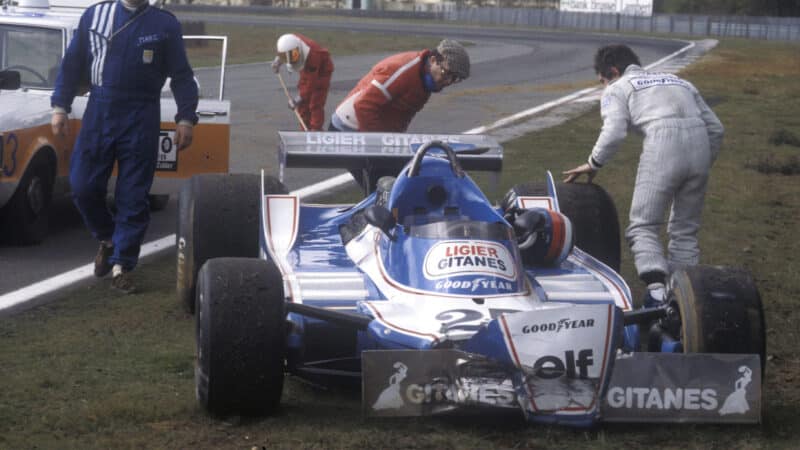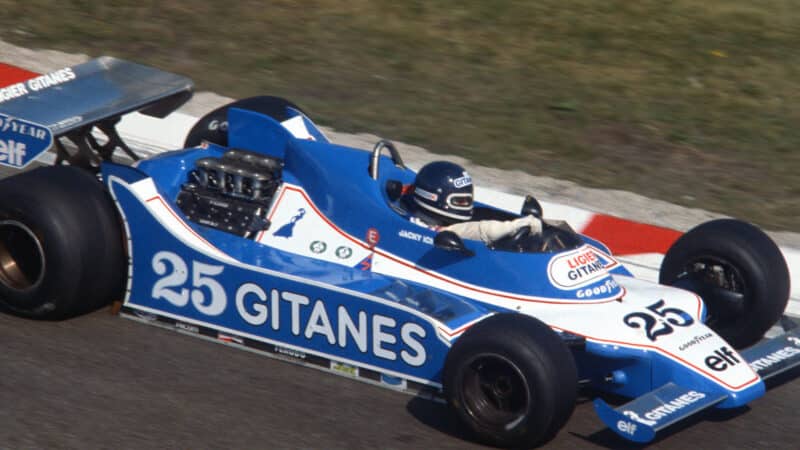Peter Wright of Lotus was the man behind the ground effect revolution in F1 and, with the benefit of hindsight, recalls: “What Ligier — and later Williams — did was look at the Lotus 79 and then build a version with a decent structure. The 79 had all the torsional stiffness of a wet lettuce; it had a rather flaky structure that was inappropriate to the downforce it generated. While Ligier and Williams did what we should have been doing, we took the view that if some was good, more was better and came up with the 80 which, in theory, had yet more ground effect — but which still had the flaky structure.”
Talk to Ducarouge today — he’s only months since retired from Matra, from where he was plucked in 1975 by Guy Ligier to be his team’s technical chief — and it’s clear that at least part of the JS11’s dominance was an historical accident: “Yes, the car had a stiff structure. But all the Ligiers had, even before this. It was a golden rule that I had learned at Matra with the sports prototypes — they were all very stiff. Ligiers were the same. For this reason they were not light — we were always a bit overweight, but I could see that some of the other F1 cars, lighter than as, had a lot of flex in them.”
Ducarouge was good at suspensions, too. The pre-ground effect Ligiers — JS5, 7 and 9 — excelled in mechanical grip, braking and traction. Stiff structure, good suspension was Duca’s Matra mantra. It stood him well immediately, but reaped spectacular gain when ground effect swirled into town. Suddenly, his was the only car — until the arrival of the Williams FW07 a few months later — with a structure able to take advantage of the aero loads produced.
The little team barely knew what had hit it. “There were only around 30 of us in total,” recalls Dany Hindenoch, the team’s commercial chief. “Our budget was FF16m [£1.6m], which even then was small. We were not a big team; bigger than some, but not as big as the others doing the winning. Argentina was a surprise; we’d had no reference to our competitors before that.”
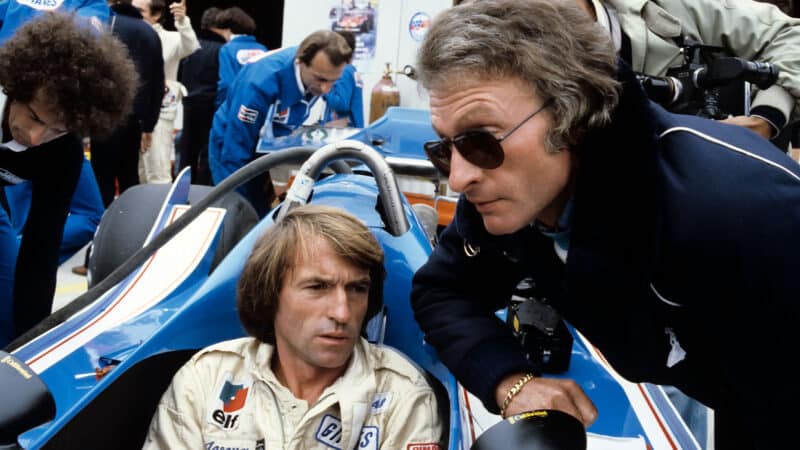
Ducarouge with Laffite
Paul-Henri Cahier/Getty Images
Ducarouge concurs: “We had no way to know how our rivals compared. We only knew that we had taken Chapman’s idea and tried to take it on a step within our resources and understanding. We didn’t know what everyone else was doing. Argentina was the first time it was clear that we were competitive.”
Unbelievably, nearly every top team had dropped the ball: Brabham, Lotus and McLaren had all produced cars structurally inadequate for ground effect; Ferrari, because of its flat-12 engine, was unable to produce a true ground effect car. So until the FW07 arrived at round five, Ligier had the world at its feet.
“But we were far too small to take advantage” explains Ducarouge. “Not enough people, not enough money. We were living like animals. People would sleep in between the two cars in the garage. And they were tiny boxes, these garages, with nothing to stop others from walking in. It’s easy to be nostalgic but, really, these were not great times.”
